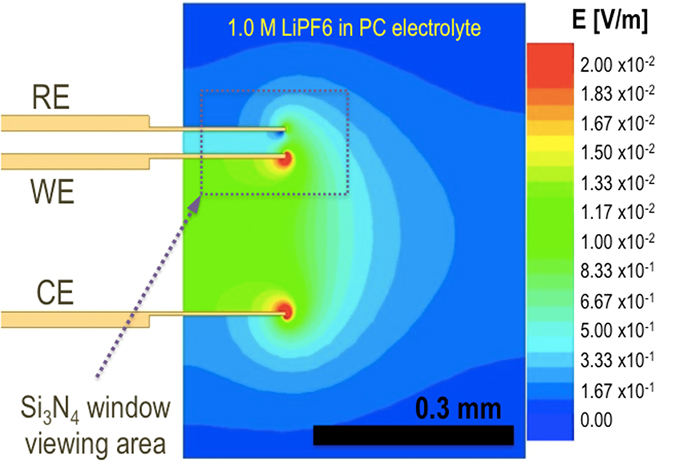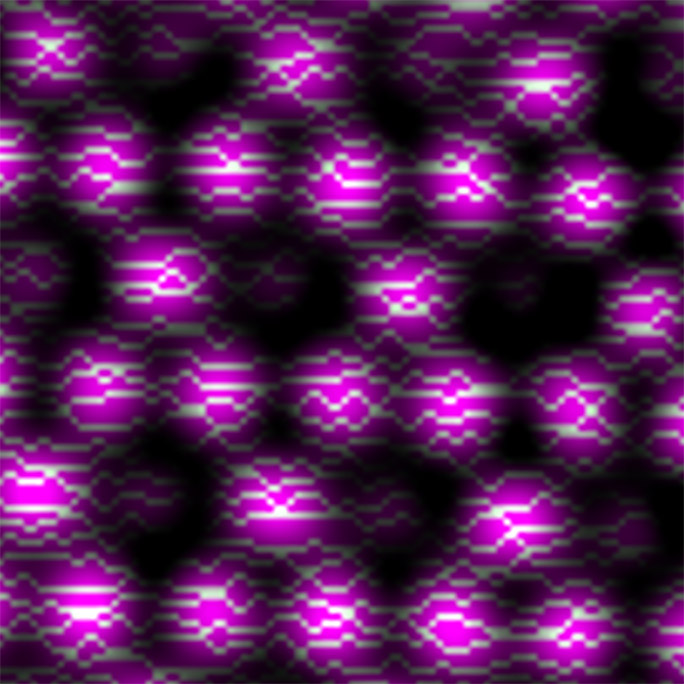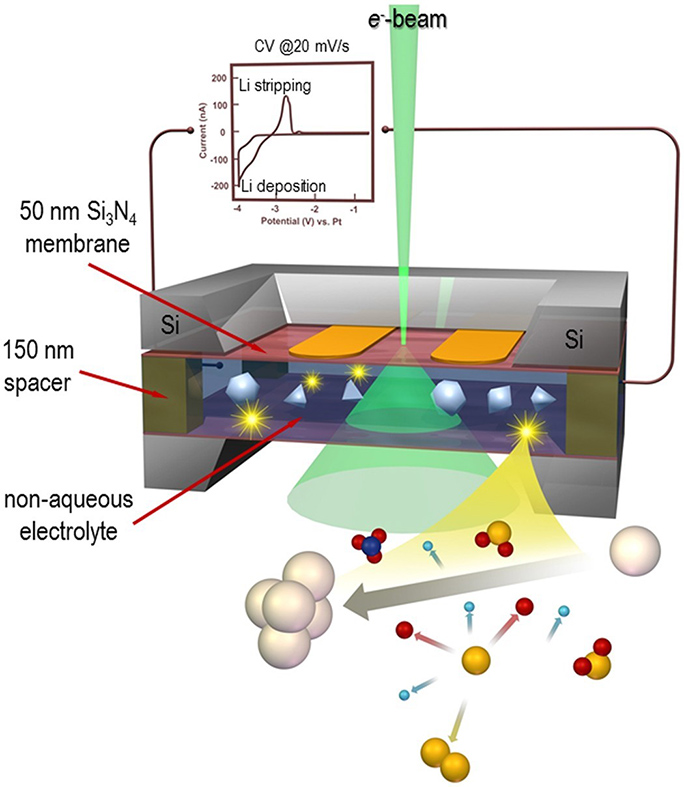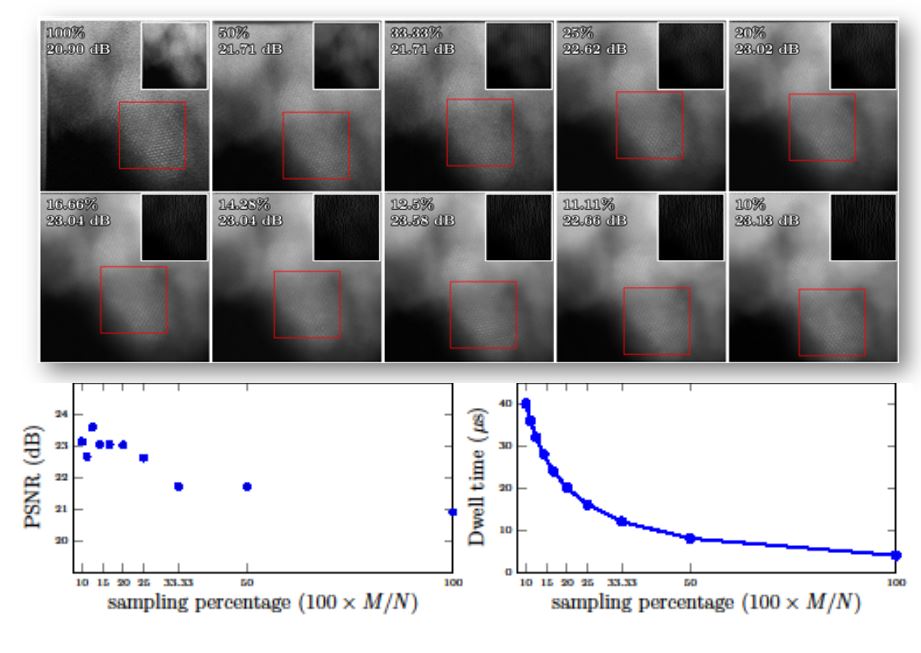Energy storage materials
The focus of this research in the Albert Crewe Centre's STEM-SRF is to use atomic resolution imaging methods and in-situ electrochemical stages (both open cell and liquid cell) to study the synthesis, degradation and recycling of advanced systems for next generation batteries.

Electrode configuration and applied fields for operando li and beyond li battery studies.
Here the use of in-situ cells allows us to directly map the transient processes in battery systems to the key structural features. Work is also currently underway with the gas cell to understand atmospheric degradation processes and optimal battery disassembly for recycling.
Hierarchical porous frameworks
New materials such as metal-organic frameworks (MOFs) contain organic ligands that can be synthesised to contain different molecules, have different chain lengths and to coordinate to different metal (or other) ions in the nodes. When the structures self-assemble to form these complex arrays of organic ligand separated nodes (which look like atomic structures but at an order of magnitude larger length scale) they can create pore structures of varying dimensions.

Direct imaging of pore/node distributions and metal-organic frameworks (MOFs).
These stable pores can lead to a wealth of potential applications, but the problem for characterisation science is that they are extremely susceptible to damage by electrons/X-rays. The key to developing the many possible industrial applications of MOFs is therefore facilitated by the ability to observe the 3-D structure and all its defects without damaging the system.
Work is underway in the Albert Crewe Centre's STEM-SRF to use in-situ methods coupled with low-dose Artificial Intelligence/Compressive sensing approaches to advance MOFs and other framework materials such as zeolites.
Nanomaterials in liquids
Arrays of nanoparticles have a wide variety of applications as plasmonic devices for both solar energy and molecular detection applications. In many cases, the properties of these arrays are controlled by the separation of the individual nanostructures, their surface termination and the stability of the particles to the environment they operate in.

Controlled in-situ nucleation and growth experiments in liquids.
Functionalising the surface of nanoparticles with organics can go a long way to increasing the nanoparticle stability in solution and also increase the ability for nanoparticles/materials to interact with biological cells, allowing them to be used to enhance contrast for medical imaging.
When the functionalisation of the nanoparticle surfaces is achieved by molecules that are being detected, the interaction of those molecules with the nanoparticle surfaces can change the resonances of the nanoparticle arrays/clusters/solutions and form the basis of sensitive chemical detectors.
For all of these applications, the key parameter involved is the interaction of the nanoparticle with the organic functionalising layer and the medium that the nanoparticles are suspended in/on – either a solid surface, a gas or a liquid. Work in the STEM-SRF uses liquid cells to identify the key interactions and properties of these colloidal nanoparticle systems.
Artificial Intelligence for advanced STEM imaging (AI4STEM)
Atomic scale images and spectra obtained from state-of-the-art STEM are highly specialised, extremely localised and cause extensive sample damage - this makes “big data” post-experiment AI methods impossible for the vast majority of experiments.
.jpg)
Moving beyond direct imaging into the efficiencies created by advanced sampling strategies.
However, these AI approaches can still provide unique step-change advances to materials characterisation by learning which information in images is most impactful for the scientific interpretation, and then designing optimal experiments that acquire only this “targeted data”. The science driven integration of key AI concepts into an optimal simultaneous acquisition and interpretation protocol for atomic scale STEM images is a unique goal of the Albert Crewe Centre.
The Albert Crewe Centre is developing a compressed sensing (CS)/AI framework will permit a range of advanced quantitative multi-scale hyperspectral data to be obtained and reconstructed using orders of magnitude fewer pixels than in conventional methods, i.e. images will be obtained under extremely low dose and/or dose rate conditions with vastly accelerated framerates. This dose/speed/resolution optimisation creates wide-ranging new opportunities to avoid electron beam damage and is being used to obtain quantified atomic scale observations of metastable materials and processes.
Constrained Dose Compressive Scanning Transmission Electron Microscopy
Compressive sensing methods can be applied to scanning transmission electron microscope to provide increased acquisition rates, reduced beam damage, and reduced drift rates way of probe subsampling. Probe subsampling reduces the incident electron dose rate that is required to form an image. An unanswered question however is how compressive sensing methods perform in a constrained dose regime. By varying the dwell time proportionally to the inverse of the sampling percentage, a set of images at different sampling percentages can be acquired with the same electron dose rate. The PSNR can then be calculated, relative to a high dwell time fully sampled acquisition, to determine whether fully sampled low dwell time (i.e. low SNR) or subsampled high dwell time (high SNR) is preferred.
Reconstruction quality of CS-STEM with constrained-dose budget. Observations are overlaid on top-right of each reconstructed image. PSNR values are computed between the reference crop (from observations with dwell time = 40μs, not shown here) and the crops identified by red squares where PSNR is maximised in the image to account for image drift. The electron dose budget is constrained to 4μs · N.
Our experiment showed that subsampling with a high signal probe outperformed full sampling with a low signal probe by ~2.5 dB. The data was acquired using the JEOL 2100F Cs-corrected STEM at the STEM-SRF and the reconstruction was performed using a beta process factor analysis implementation developed at Liverpool in conjunction with the Albert Crewe Centre.
